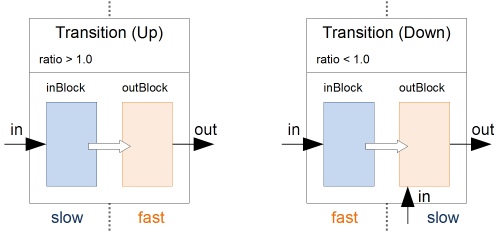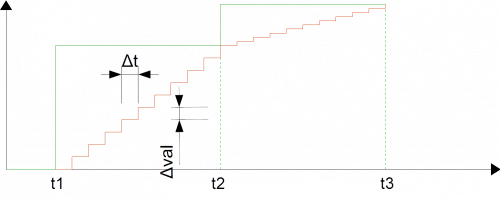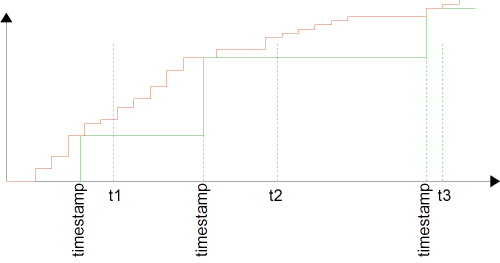eeros_architecture:control_system:available_blocks:transition
This is an old revision of the document!
Transition
A transition block allows to connect two different time domains. It is basically a container holding two blocks. Each of the two time domains runs one of those two blocks.
Interpolator
If a signal crosses from a slower time domain into a fast one, the transition block behaves as an interpolator. A change in the input signal is interpolated with small incremental steps (in amplitude as well as timestamps) on the output signal.
Such a block can be created by choosing a ratio greater then 1. The ratio must much the ratio of the periods of the two time domains. The figure above shows the resulting curve for a ratio of 10.
Transition<Vector2> tInterpolator(10); TimeDomain tdSlow("td slow", 0.1, false) Timedomain tdFast("td fast", 0.01, true); tdSlow.add(tInterpolator.inBlock); tdFast.add(tInterpolator.outBlock);
Filter
eeros_architecture/control_system/available_blocks/transition.1508510245.txt.gz · Last modified: 2017/10/20 16:37 (external edit)



